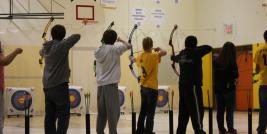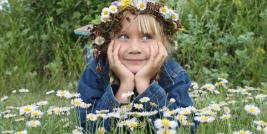Meateaters and Planteaters is a 60 minute classroom presentation showing the different physical characteristics and behaviours of carnivores, herbivores, and omnivores.
Content:
- use of animal mounts and skulls of animals below
- students will participate in aging deer by looking at the teeth in deer jaws
Review terminology prior to presentation
- Carnivore - an animal that eats a diet consisting mainly of meat, whether it comes from live animals or dead ones (scavenging). Some animals are considered carnivores even if their diet contains very little meat
- Herbivore - organisms that depend only on green plants or plant produce for their nutrition
- Omnivore - a kind of animal that eats other animals or plants. Some omnivores will hunt and eat their food, like carnivores, eating herbivores and other omnivores. Some others are scavengers and will eat dead matter. Many will eat eggs from other animals.
- Scavenger - an organism that mostly consumes decaying biomass, such as meat or rotting plant material. Many scavengers are a type of carnivore.
- Predator - an animal that captures and kills another animal for food
- Prey - an animal that is hunted and killed by another animal for food
- Incisor - a sharp flattened chisel-shaped tooth in mammals that is adapted for biting food and, in rodents, for gnawing
- Canine - a type of tooth with a single point and a single root used to hold and tear food
- Molar - a wide, flat tooth found in the back of a mammals mouth. Molars grind food during chewing.
- Dentin - the hard porous tissue located under both the enamel and cementum of the tooth. Dentin is harder than bone
- Enamel - the tough, shiny, white outer surface of the tooth
- Cusp - a pointed or round projection on the chewing surface of a tooth
- Binocular Vision - vision using two (2) eyes with overlapping fields of view, allowing good perception of depth
- Monocular Vision - both eyes are used separately. By using the eyes in this way, as opposed to binocular vision, the field of view is increased, while depth perception is limited.
Set up:
- have class divided into 5 groups
- have a space (library, science room) where students can work around tables
- two (2) large tables to display animal mounts and skulls
Related Documents:
| How to Age a Deer |
Curriculum Connections |
|
Outcomes |
Indicators |
Grade 4 |
Science |
HC4.1 Investigate the interdependence of plants and animals, including humans, within habitats and communities. |
a,f |
|
|
Science |
HC4.2 Analyze the structures and behaviours of plants and animals that enable them to exist in various habitats. |
a,c,g,i,j |
Grade 6 |
Science |
DL6.2 Examine how humans organize understanding of the diversity of living things. |
a,d |
|
|
Science |
DL6.3 Analyze the characteristics and behaviours of vertebrates (i.e., mammals, birds, reptiles, amphibians, and fish) and invertebrates. |
b,c,e |
|
|
Science |
DL6.4 Examine and describe structures and behaviours that help:
|
a,b,d,g,i |
Grade 7 |
Science |
IE7.2 Observe, illustrate, and analyze living organisms within local ecosystems as part of interconnected food webs, populations, and communities. |
i,j |





